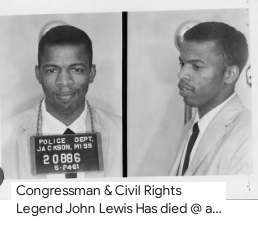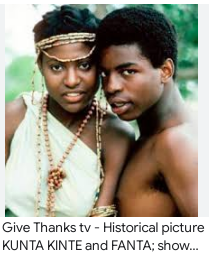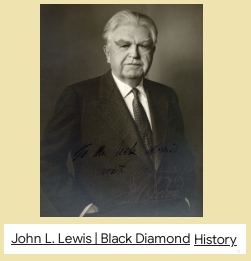Essays Contents
John Robert Lewis
January 22, 2024

John Lewis -- Wikipedia
John Robert Lewis (February 21, 1940 – July 17, 2020)
was an American politician and civil rights activist
who served in the United States House of Representatives
for Georgia's 5th congressional district from 1987 until his death in 2020.
He participated in the 1960 Nashville sit-ins,
the Freedom Rides... was the chairman of the
Student Nonviolent Coordinating Committee (SNCC)
from 1963 to 1966, and was one of the "Big Six" leaders
of groups who organized the 1963 March on Washington.
Fulfilling many key roles in the civil rights movement
and its actions to end legalized racial segregation
in the United States, in 1965 Lewis led the first of three
Selma to Montgomery marches across the Edmund Pettus Bridge
where, in an incident which became known as Bloody Sunday,
state troopers and police attacked Lewis and the other marchers.
Hey, he looks like... LeVar Burton...!! you know... Kunta Kinte...!!



Beginning a little research project on John... Lewis...
I remembered hearing the name John... L... Lewis... a lot...
But... lo... this "hero" Congressman... was... John... R... Lewis.
So... here I go... down the yellow brick road...
Who was John... L... Lewis...?
The second... most... powerful man... in America...???!!!
I went to see...


John L. Lewis, from
Black Diamond History
John L. Lewis
January 26, 2015
by Black Diamond History
Originally published in the Voice of the Valley,
November 4, 2008
By Bill Kombol
As Americans take to the polls today to vote, they will elect a new president,
the most powerful man in the country. During his day as leader of the United
Mine Workers, John L. Lewis was often referred to as
“the second most powerful man In America.”
During the 1920s through the 1950s, coal was the fuel that powered America.
And with control of over 400,000 miners, Lewis often led his union to strike at
opportune times when the country was most dependent upon coal.
Lewis was the driving force behind the creation of the Congress of Industrial
Organizations, the second half of the acronym AFL-CIO. He worked tirelessly
on behalf of his miners for better wages and safer working conditions.
According to Rich Miller, a retired coal miner from Roslyn, many coal miners’
homes revered three figures: “God, John L. Lewis, and Franklin D. Roosevelt.”
This portrait was personally inscribed by Lewis
“to Mr. Jack Morris with warm personal regards.”
Morris was the long time president of Palmer Coking Coal Co.
This framed portrait was donated by
John H. “Jack” Morris’ daughter, Pauline Kombol,
to the Black Diamond Historical Society
and is on display at the museum.
Black Diamond Historical Society... where I also found...
this...
what a haunting... story.

The legacy of the doll: Frank Bussey’s special gift
December 22, 2013 by Black Diamond History
Originally published in the Black Diamond Bulletin, Summer 2013
By JoAnne Matsumura
For weeks I was among the dolls at the company store,
having arrived in the summer of 1920. I was made by
the Efanbee Doll Company of fine porcelain,
glass eyes, human hair, and specially designed clothes.
The company store applied an amount toward the outstanding
balance each payday and eventually I was brought to company
house #188, the home of Francis “Frank” Bussey, a Mine 11 coal
miner of several decades, and Andrew and Alice Bussey Haag, Jr.,
Frank’s son-in-law and daughter.
I was to be Santa’s Christmas gift for Dorothy Haag,
Frank’s granddaughter.
The tragic events of December 22, 1920, however, intervened.
The rooms were filled with grief, sadness, and tears
from family, friends, workers, and mine officials.
The loss took the lives of four miners in an instant.
The community gathered at families’ homes,
bringing food and gifts.
I was lovingly cradled by Dorothy, a child too young to
grasp the severity of the loss. She would never see her
grandfather again. Dorothy only knew that the doll was
a special gift from him—one to be treasured and cherished.
Frank, a timberman with pillar crew workmates
Joe Grill, Charles Heavilin, and Frank Nivone,
were working in Mine 11,
½-mile below the surface on the 11th level.
Andrew and his brother, Sam Haag, were working next to Frank --
in fact the three had just had lunch together. Within minutes of
leaving Frank, they heard a crash and just missed death by a
whisker themselves, Andrew later told his wife,
as he and Sam scrambled to the surface via an air shaft.
Andrew sounded the Mine 11 siren and other miners began removing
the tons of debris in hopes of finding the trapped miners alive.
The community rushed to the mouth of the mine to await word --
hoping for survivors….
For many years I was carefully stored in a box until those December
days when I was brought out and kept on Dorothy’s bed. I could feel
her sadness for the grandfather she only knew from stories and photographs.
If only I could tell her how he choose me over the other dolls -- it may
have been a resemblance, the touch of human hair, the dainty dress
that he may have wished he could give to Dorothy.
In time Dorothy grew to adulthood and gave me a special place in
her home. She understood the details of the mine accident: a cave-in --
or a “bump,” as it was called -- but understanding didn’t fill the void.
She married Harry Johnson and remained in Black Diamond.
Dorothy had one daughter, Carolyn, and four boys,
and I was pleased that I was given to Carolyn --
a special gift from her great-grandfather. Carolyn cared
for me through the years, and in time gave me the name
of Dorothy Francis in memory of
Dorothy Haag and Francis Bussey.
Carolyn Johnson Christopher gave me to the
Black Diamond Historical Society in 2006 to be exhibited with
the other dolls in a place of honor -- to greet visitors who enter as
a tribute to
Frank Bussey Joe Grill
Charles Heavilin Frank Nivone.
John Robert Lewis (February 21, 1940 – July 17, 2020)
was an American politician and civil rights activist
who served in the United States House of Representatives
for Georgia's 5th congressional district from 1987 until his death in 2020.
He participated in the 1960 Nashville sit-ins,
the Freedom Rides... was the chairman of the
Student Nonviolent Coordinating Committee (SNCC)
from 1963 to 1966, and was one of the "Big Six" leaders
of groups who organized the 1963 March on Washington.
Fulfilling many key roles in the civil rights movement
and its actions to end legalized racial segregation
in the United States, in 1965 Lewis led the first of three
Selma to Montgomery marches across the Edmund Pettus Bridge
where, in an incident which became known as Bloody Sunday,
state troopers and police attacked Lewis and the other marchers.





John L. Lewis, from
Black Diamond History
John L. Lewis
January 26, 2015
by Black Diamond History
Originally published in the Voice of the Valley,
November 4, 2008
By Bill Kombol
As Americans take to the polls today to vote, they will elect a new president,
the most powerful man in the country. During his day as leader of the United
Mine Workers, John L. Lewis was often referred to as
“the second most powerful man In America.”
During the 1920s through the 1950s, coal was the fuel that powered America.
And with control of over 400,000 miners, Lewis often led his union to strike at
opportune times when the country was most dependent upon coal.
Lewis was the driving force behind the creation of the Congress of Industrial
Organizations, the second half of the acronym AFL-CIO. He worked tirelessly
on behalf of his miners for better wages and safer working conditions.
According to Rich Miller, a retired coal miner from Roslyn, many coal miners’
homes revered three figures: “God, John L. Lewis, and Franklin D. Roosevelt.”
This portrait was personally inscribed by Lewis
“to Mr. Jack Morris with warm personal regards.”
Morris was the long time president of Palmer Coking Coal Co.
This framed portrait was donated by
John H. “Jack” Morris’ daughter, Pauline Kombol,
to the Black Diamond Historical Society
and is on display at the museum.

The legacy of the doll: Frank Bussey’s special gift
December 22, 2013 by Black Diamond History
Originally published in the Black Diamond Bulletin, Summer 2013
By JoAnne Matsumura
For weeks I was among the dolls at the company store,
having arrived in the summer of 1920. I was made by
the Efanbee Doll Company of fine porcelain,
glass eyes, human hair, and specially designed clothes.
The company store applied an amount toward the outstanding
balance each payday and eventually I was brought to company
house #188, the home of Francis “Frank” Bussey, a Mine 11 coal
miner of several decades, and Andrew and Alice Bussey Haag, Jr.,
Frank’s son-in-law and daughter.
I was to be Santa’s Christmas gift for Dorothy Haag,
Frank’s granddaughter.
The tragic events of December 22, 1920, however, intervened.
The rooms were filled with grief, sadness, and tears
from family, friends, workers, and mine officials.
The loss took the lives of four miners in an instant.
The community gathered at families’ homes,
bringing food and gifts.
I was lovingly cradled by Dorothy, a child too young to
grasp the severity of the loss. She would never see her
grandfather again. Dorothy only knew that the doll was
a special gift from him—one to be treasured and cherished.
Frank, a timberman with pillar crew workmates
Joe Grill, Charles Heavilin, and Frank Nivone,
were working in Mine 11,
½-mile below the surface on the 11th level.
Andrew and his brother, Sam Haag, were working next to Frank --
in fact the three had just had lunch together. Within minutes of
leaving Frank, they heard a crash and just missed death by a
whisker themselves, Andrew later told his wife,
as he and Sam scrambled to the surface via an air shaft.
Andrew sounded the Mine 11 siren and other miners began removing
the tons of debris in hopes of finding the trapped miners alive.
The community rushed to the mouth of the mine to await word --
hoping for survivors….
For many years I was carefully stored in a box until those December
days when I was brought out and kept on Dorothy’s bed. I could feel
her sadness for the grandfather she only knew from stories and photographs.
If only I could tell her how he choose me over the other dolls -- it may
have been a resemblance, the touch of human hair, the dainty dress
that he may have wished he could give to Dorothy.
In time Dorothy grew to adulthood and gave me a special place in
her home. She understood the details of the mine accident: a cave-in --
or a “bump,” as it was called -- but understanding didn’t fill the void.
She married Harry Johnson and remained in Black Diamond.
Dorothy had one daughter, Carolyn, and four boys,
and I was pleased that I was given to Carolyn --
a special gift from her great-grandfather. Carolyn cared
for me through the years, and in time gave me the name
of Dorothy Francis in memory of
Dorothy Haag and Francis Bussey.
Carolyn Johnson Christopher gave me to the
Black Diamond Historical Society in 2006 to be exhibited with
the other dolls in a place of honor -- to greet visitors who enter as
a tribute to
Frank Bussey Joe Grill Charles Heavilin Frank Nivone.

